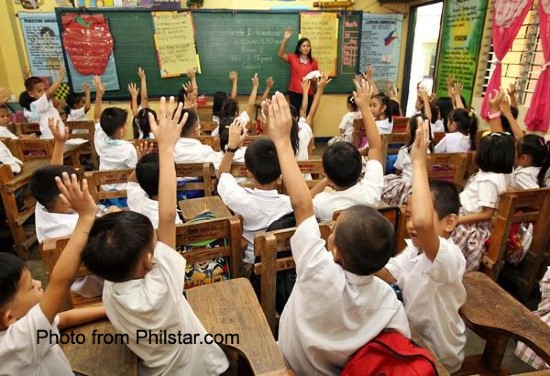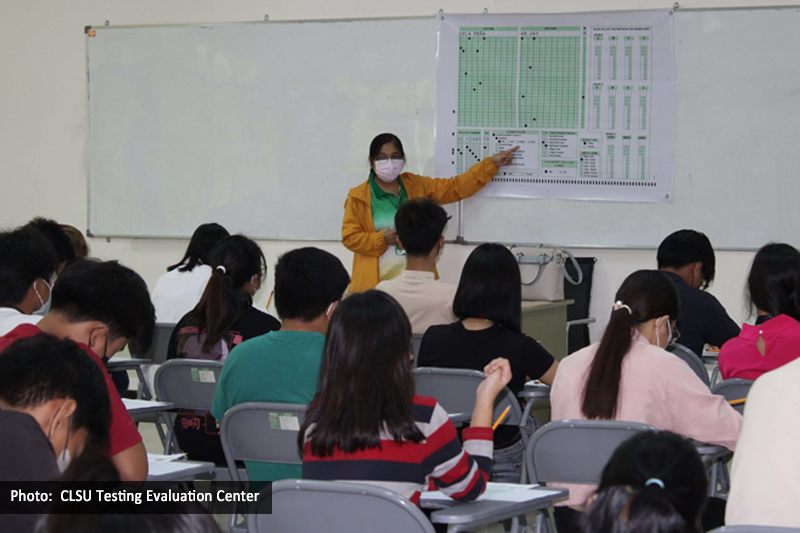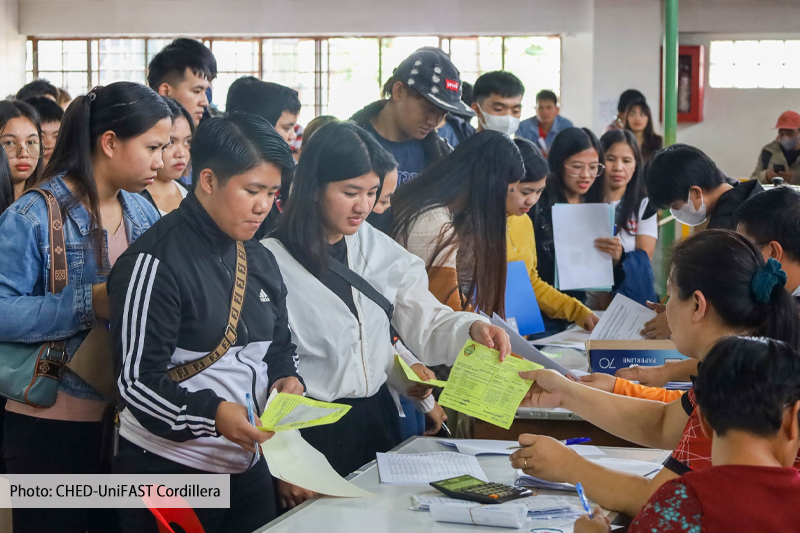
More boys drop out of school or obtain failing grades compared to girls in basic education, a research study of the Philippine Institute for Development Studies (PIDS) revealed.
The PIDS research paper titled "Boys Are Still Left Behind in Basic Education" showed that about two-thirds or 65 percent of out-of-school children (OOSC) in 2017, aged 5-17 years, were composed of boys. It also revealed that 22 percent of boys between ages 12 and 15 did not reach the upper secondary level compared with girls at 12 percent. This is also similar in the lower secondary level (12-15 years old) wherein the OOSC rate for boys was at 8 percent and 3 percent for girls.
This poor performance, according to PIDS Senior Research Fellow Dr. Jose Ramon Albert, PIDS Consultant Dr. Clarissa C. David, and PIDS Research Analyst Jana Flor V. Vizmanos, “can often lead to low motivation to continue school”, which may eventually result in student dropout. Boys, they said, were also likely to obtain low grades, take remedial classes, and have difficulty in getting accepted to the next school level.
One of the reasons of school dropouts identified by the study is the lack of interest especially among boys in the primary and secondary levels. The authors found that this “lack of interest” may come from their parents’ lack of desire in sending them to school. A report of the World Bank in 2018 speculated that “parents may calculate that the perceived gains of further education are no longer worth the opportunity cost.” But this view has been refuted by the PIDS study. It noted that the “opportunity costs versus perceived gains in the schooling of children are not considered competing factors even for families living in poverty,” adding that, “there is full appreciation of the importance of schooling” regardless of how poor the family may be.
Also, according to the study, 13.7 percent and 6.4 percent of out-of-school primary-school-age boys and girls, respectively, cited cost of education as another reason why they do not attend school.
Other causes of dropout incidence in boys were “peer influence (i.e., barkada) and vices”. Computer and mobile phone games were also identified as main causes of chronic absenteeism and lack of focus in school. According to the authors, male students are “more likely to engage in computer and mobile games, skip school with their peers, and start drinking and smoking”.
To address these concerns, the authors urged the Department of Education (DepEd) to design and implement “specific learning materials and tools appropriate to a certain curriculum to accommodate diverse manners of learning”. Teachers should also be allowed to exercise “flexibility in designing interventions specific to addressing barriers” that can affect the learning of boys. The authors also suggested the “use of activity-based learning using manipulatives, tools, and experiments to illustrate lessons, to keep boys interested and motivated”.
The PIDS authors also proposed the granting of “incentives to schools and teachers who can develop effective learning interventions for boys”. They also stressed the “need to enhance coordination with local government units through the Department of the Interior and Local Government and the local school boards to reduce school absenteeism and prevent boys, particularly older ages, getting waylaid by peers and vices, including computer games”.
The authors also advised DepEd to diversify the education workforce in order to strike a balance between women and men teachers, which could result in long-term positive impact on boys. They pointed out that increasing the number of male teachers with whom boys can “identify with more directly” and “share their problems comfortably with” may have more beneficial effects, especially for those who lack male role models at home because of the absence of the father.
DepED is also encouraged to work with the Department of Social Welfare and Development to study the possibility of increasing the conditional cash transfer allowances for boys, especially at a later age. ###
The PIDS research paper titled "Boys Are Still Left Behind in Basic Education" showed that about two-thirds or 65 percent of out-of-school children (OOSC) in 2017, aged 5-17 years, were composed of boys. It also revealed that 22 percent of boys between ages 12 and 15 did not reach the upper secondary level compared with girls at 12 percent. This is also similar in the lower secondary level (12-15 years old) wherein the OOSC rate for boys was at 8 percent and 3 percent for girls.
This poor performance, according to PIDS Senior Research Fellow Dr. Jose Ramon Albert, PIDS Consultant Dr. Clarissa C. David, and PIDS Research Analyst Jana Flor V. Vizmanos, “can often lead to low motivation to continue school”, which may eventually result in student dropout. Boys, they said, were also likely to obtain low grades, take remedial classes, and have difficulty in getting accepted to the next school level.
One of the reasons of school dropouts identified by the study is the lack of interest especially among boys in the primary and secondary levels. The authors found that this “lack of interest” may come from their parents’ lack of desire in sending them to school. A report of the World Bank in 2018 speculated that “parents may calculate that the perceived gains of further education are no longer worth the opportunity cost.” But this view has been refuted by the PIDS study. It noted that the “opportunity costs versus perceived gains in the schooling of children are not considered competing factors even for families living in poverty,” adding that, “there is full appreciation of the importance of schooling” regardless of how poor the family may be.
Also, according to the study, 13.7 percent and 6.4 percent of out-of-school primary-school-age boys and girls, respectively, cited cost of education as another reason why they do not attend school.
Other causes of dropout incidence in boys were “peer influence (i.e., barkada) and vices”. Computer and mobile phone games were also identified as main causes of chronic absenteeism and lack of focus in school. According to the authors, male students are “more likely to engage in computer and mobile games, skip school with their peers, and start drinking and smoking”.
To address these concerns, the authors urged the Department of Education (DepEd) to design and implement “specific learning materials and tools appropriate to a certain curriculum to accommodate diverse manners of learning”. Teachers should also be allowed to exercise “flexibility in designing interventions specific to addressing barriers” that can affect the learning of boys. The authors also suggested the “use of activity-based learning using manipulatives, tools, and experiments to illustrate lessons, to keep boys interested and motivated”.
The PIDS authors also proposed the granting of “incentives to schools and teachers who can develop effective learning interventions for boys”. They also stressed the “need to enhance coordination with local government units through the Department of the Interior and Local Government and the local school boards to reduce school absenteeism and prevent boys, particularly older ages, getting waylaid by peers and vices, including computer games”.
The authors also advised DepEd to diversify the education workforce in order to strike a balance between women and men teachers, which could result in long-term positive impact on boys. They pointed out that increasing the number of male teachers with whom boys can “identify with more directly” and “share their problems comfortably with” may have more beneficial effects, especially for those who lack male role models at home because of the absence of the father.
DepED is also encouraged to work with the Department of Social Welfare and Development to study the possibility of increasing the conditional cash transfer allowances for boys, especially at a later age. ###












